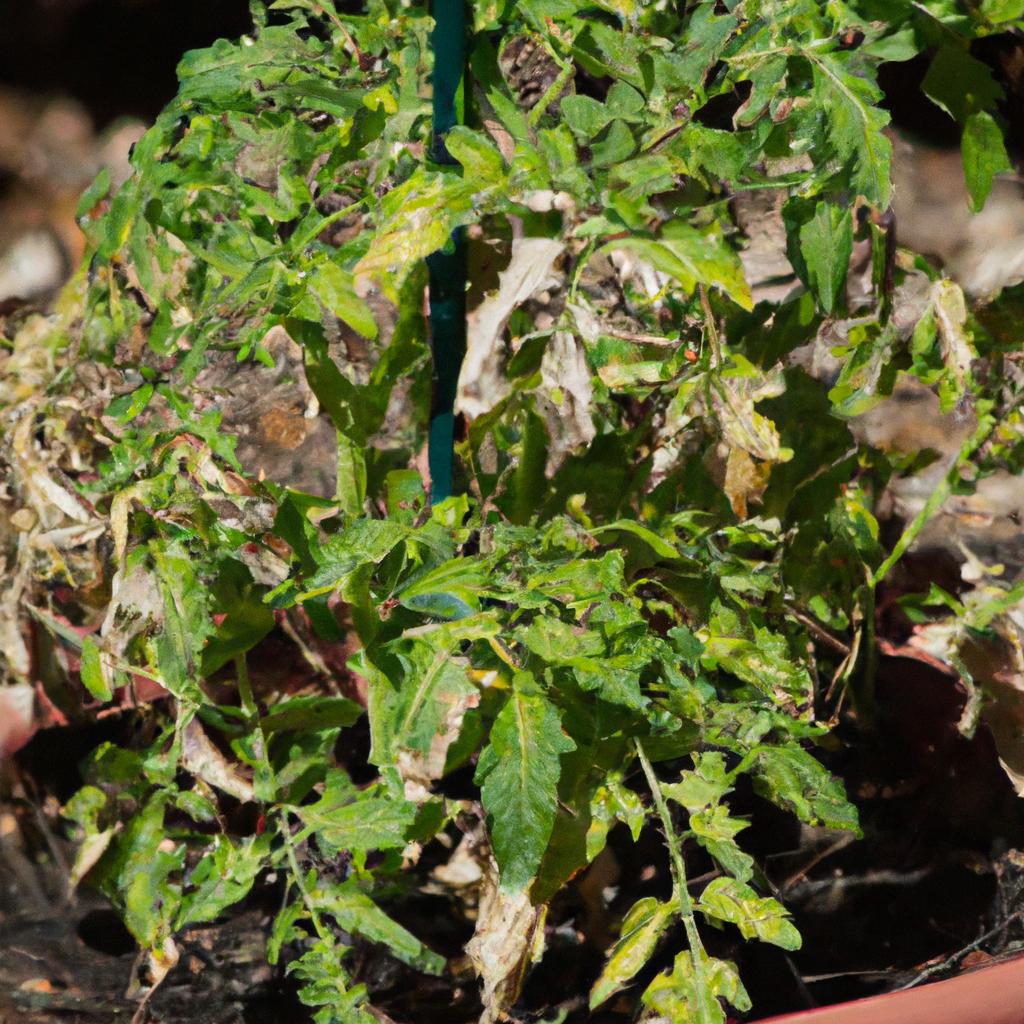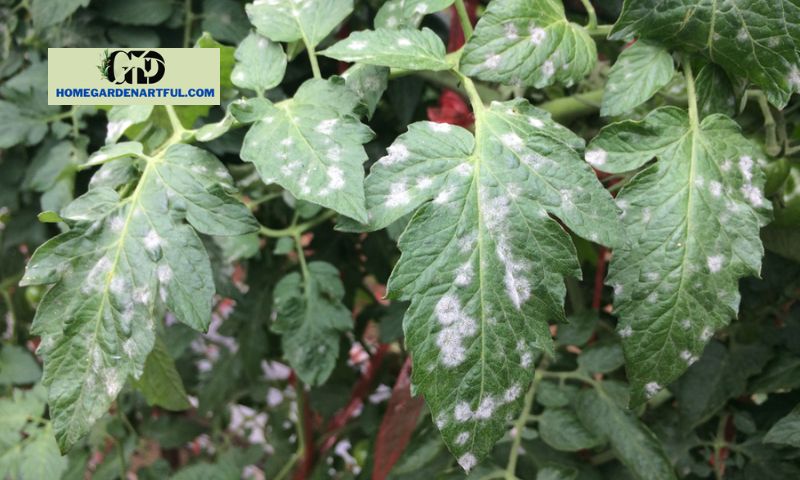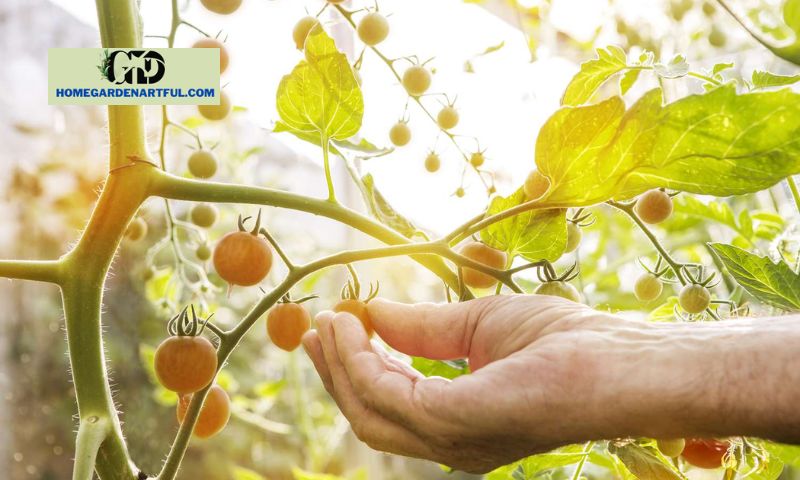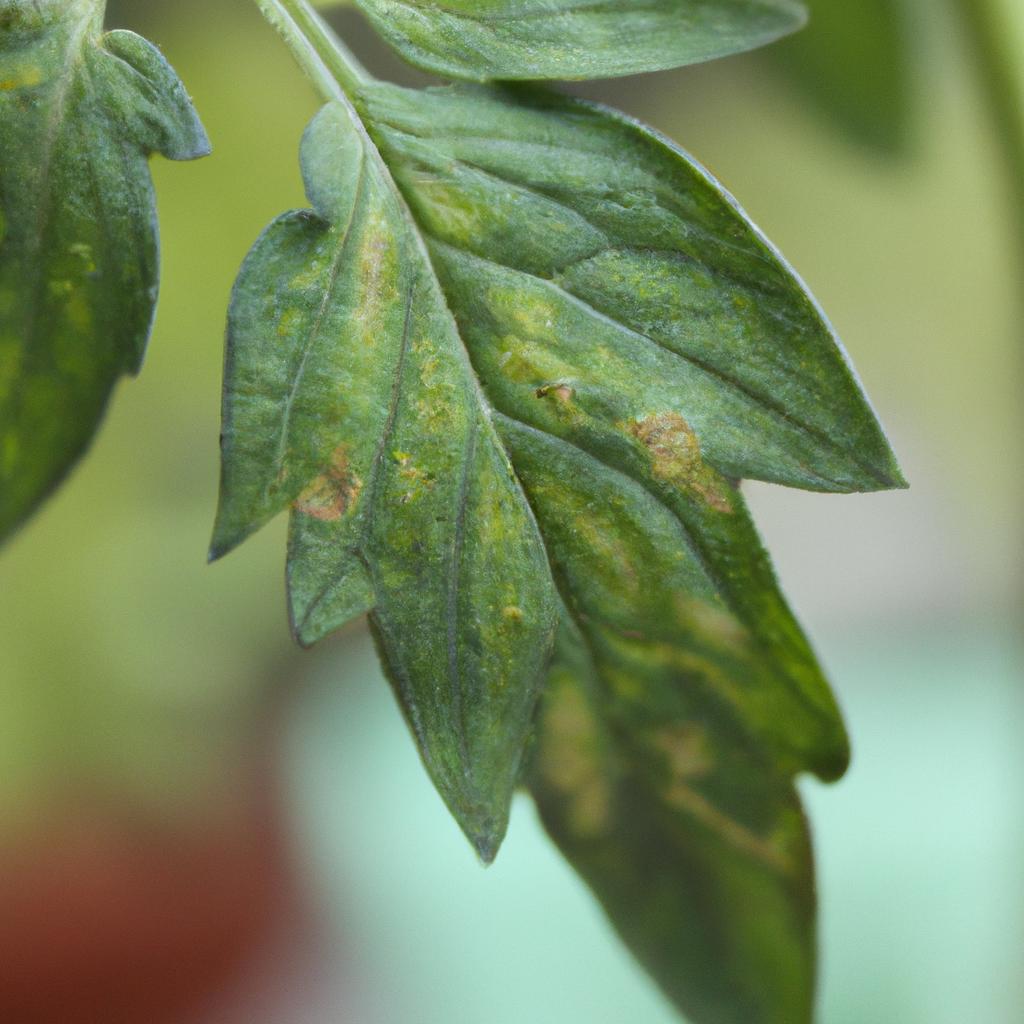Discover effective ways to treat tomato leaf sunburn, from identifying damaged leaves to applying organic remedies and monitoring plant recovery.
Have you ever noticed your tomato plants withering under the scorching sun? The culprit might be tomato leaf sunburn. Tomato leaf sunburn occurs when the leaves of tomato plants are exposed to excessive sunlight, leading to damage and hindered growth. In this article, homegardenartful.com will delve into the causes of tomato leaf sunburn and emphasize the significance of understanding and preventing this issue to ensure the health and productivity of your tomato plants.
A Brief Explanation of Tomato Leaf Sunburn
Tomato leaf sunburn is a condition where the leaves of tomato plants experience damage due to prolonged exposure to intense sunlight and high temperatures. The leaves, usually vibrant green, may develop yellow or brown patches, become dry and brittle, or even curl up. This damage can hinder the plant’s ability to perform essential functions like photosynthesis, leading to reduced growth and productivity.
The Importance of Understanding and Preventing Tomato Leaf Sunburn
Understanding tomato leaf sunburn is crucial for any avid gardener or tomato enthusiast. By comprehending the causes and effects of this condition, you can take proactive measures to prevent it, ensuring the vitality and yield of your tomato plants. Ignoring tomato leaf sunburn can result in stunted growth, decreased fruit production, and increased vulnerability to diseases and pests.
To embark on an effective prevention strategy, we must first explore the factors contributing to tomato leaf sunburn. Stay tuned to the upcoming sections, where we will uncover the effects of tomato leaf sunburn and reveal practical tips to protect your tomato plants from the scorching rays of the sun. Together, we can ensure our tomato plants thrive, bearing bountiful, luscious fruits.
Understanding Tomato Leaf Sunburn

Definition and Symptoms of Tomato Leaf Sunburn
Tomato leaf sunburn refers to the damage that occurs to the leaves of tomato plants when they are exposed to excessive sunlight and heat. The symptoms of tomato leaf sunburn manifest as yellow or brown patches on the leaves, which may eventually turn dry and brittle. In severe cases, the leaves may even curl up or exhibit necrotic spots. These visible signs indicate that the plant is struggling to cope with the intense sunlight, resulting in reduced photosynthesis and impaired growth.
Factors Contributing to Tomato Leaf Sunburn
1. Excessive Sunlight Exposure
Exposing tomato plants to prolonged periods of direct sunlight without any shade or protection is a leading cause of tomato leaf sunburn. The intense UV rays and heat from the sun overwhelm the leaves, causing them to suffer from sunburn. This is especially common in regions with hot, arid climates or during heatwaves.
2. High Temperatures
High temperatures can exacerbate the risk of tomato leaf sunburn. When the temperature rises above the optimal range for tomato plants, the leaves become more susceptible to sunburn. This is because the heat intensifies the sun’s effects and increases the evaporation rate, leading to dehydration and stress on the plant.
3. Lack of Proper Hydration
Proper hydration is vital for maintaining the health and resilience of tomato plants. When tomato plants do not receive adequate water, they become dehydrated, making them more susceptible to sunburn. Without sufficient moisture, the leaves cannot cool themselves through transpiration, leaving them more prone to damage from sunlight and heat.
By understanding these contributing factors, we can take proactive steps to protect our tomato plants from sunburn. In the next section, we will explore effective preventive measures, including providing shade and ensuring proper hydration, to shield our plants from the harmful effects of excessive sunlight.
Effects of Tomato Leaf Sunburn

Tomato leaf sunburn goes beyond mere aesthetic damage and has far-reaching consequences for the overall health and productivity of your tomato plants. Let’s delve into the various effects this condition can have:
Impact on Tomato Plant Health and Growth
When tomato leaves suffer from sunburn, their ability to carry out vital functions such as photosynthesis and nutrient absorption is compromised. The damaged leaves struggle to produce sufficient energy, hindering the plant’s growth and development. This can result in stunted plants, weakened stems, and reduced overall plant vigor.
Reduced Productivity and Yield
Tomato plants rely on healthy leaves to produce an abundance of flavorful fruits. However, when sunburn damages the foliage, the plant’s capacity to generate energy diminishes. As a result, the plant may allocate fewer resources to fruit production, leading to decreased yields and smaller-sized tomatoes. This reduction in productivity can be disappointing for gardeners seeking a bountiful harvest.
Increased Susceptibility to Diseases and Pests
Sunburned leaves can become more susceptible to various diseases and pests. The weakened state of the plant leaves it vulnerable to pathogens such as fungi and bacteria, which can cause further damage and deteriorate the plant’s health. Additionally, pests like aphids and spider mites are more likely to attack stressed plants, exacerbating the problem.
Understanding the detrimental effects of tomato leaf sunburn highlights the urgency of taking preventive measures. In the next section, we will explore effective strategies to shield your tomato plants from the scorching rays of the sun and ensure their resilience against potential threats. By addressing these effects head-on, we can pave the way for healthy, thriving tomato plants in our gardens.
Preventing Tomato Leaf Sunburn

One of the most effective ways to prevent tomato leaf sunburn is by providing adequate shade and protection for your plants. By shielding them from direct sunlight during the hottest parts of the day, you can significantly reduce the risk of sunburn. Here are a few methods you can employ:
Providing Adequate Shade and Protection
1. Using Shade Cloth or Umbrellas
Consider using shade cloth or umbrellas to create a protective barrier between the sun’s rays and your tomato plants. These materials can be strategically placed to provide shade while still allowing sufficient light for photosynthesis. By blocking out excessive sunlight, you can safeguard your plants from the harmful effects of sunburn.
2. Creating Temporary Structures for Shading
Another option is to construct temporary structures, such as wooden frames or trellises, to provide shade for your tomato plants. You can drape lightweight fabric or netting over these structures to create a shaded area. This method allows you to adjust the shade coverage as needed and provides flexibility in protecting your plants during the hottest parts of the day.
Proper Watering Techniques
Proper watering is crucial in preventing tomato leaf sunburn. By maintaining consistent soil moisture levels, you can help your plants cope with high temperatures and reduce the risk of sunburn. Here are some watering tips to keep in mind:
1. Maintaining Consistent Soil Moisture
Ensure that the soil around your tomato plants remains consistently moist but not waterlogged. Monitor the moisture levels regularly and adjust your watering schedule accordingly. A well-hydrated plant is better equipped to withstand the heat and is less prone to sunburn.
2. Avoiding Overwatering or Underwatering
Finding the right balance is key. Overwatering can lead to root rot and other issues, while underwatering can stress the plants and make them more susceptible to sunburn. Pay attention to the moisture needs of your tomato plants and water them appropriately to maintain optimal health.
Mulching to Regulate Soil Temperature
Mulching is an effective technique to regulate soil temperature, preventing extreme fluctuations that can contribute to tomato leaf sunburn. Consider the following tips when mulching your tomato plants:
1. Types of Mulch Suitable for Tomato Plants
Choose organic mulch, such as straw, wood chips, or compost, that can help retain moisture and regulate soil temperature effectively. These types of mulch also provide additional nutrients to the soil as they break down.
2. Applying Mulch Effectively
Apply a layer of mulch around the base of your tomato plants, ensuring it covers the soil surface but avoids direct contact with the stems. Mulch acts as a protective barrier, shielding the roots from excessive heat and reducing the risk of sunburn.
By implementing these preventive measures, you can create a favorable environment for your tomato plants, reducing the risk of sunburn and promoting healthy growth. Stay tuned for the upcoming section where we’ll discuss how to identify and treat tomato leaf sunburn if it does occur.
Conclusion
In conclusion, understanding and preventing tomato leaf sunburn are crucial for maintaining the health and productivity of your tomato plants. By recognizing the causes and effects of this condition, you can take proactive measures to protect your plants and ensure a bountiful harvest.
Tomato leaf sunburn occurs when the leaves of tomato plants are exposed to excessive sunlight and high temperatures, leading to damage and hindered growth. It is essential to identify sunburned leaves by recognizing symptoms such as yellow or brown patches, dryness, and curling. Once identified, steps can be taken to alleviate sunburn damage.
Pruning affected leaves is a practical approach to remove damaged foliage and stimulate new growth. Additionally, applying organic remedies or protective sprays can aid in the recovery process. These remedies can include natural solutions like aloe vera or diluted neem oil, providing a protective barrier against further sun damage.
Monitoring the plant’s recovery is crucial in adjusting preventive measures. Continuously observe the progress of your tomato plants and make necessary changes to shade coverage, watering techniques, and mulching. This adaptability allows you to cater to the specific needs of your plants and ensure their optimal health.
In conclusion, tomato leaf sunburn can be prevented and treated with proper care and attention. By implementing the preventive strategies outlined in this article, you can safeguard your tomato plants against the scorching sun and enjoy a thriving garden filled with delicious, sun-kissed tomatoes.
Remember, a little extra effort in protecting your tomato plants from sunburn can result in a more abundant harvest and a sense of fulfillment in your gardening journey. So, let’s nurture our tomato plants and create a thriving oasis in our gardens.
Boldly grow your garden with homegardenArtful.com!


